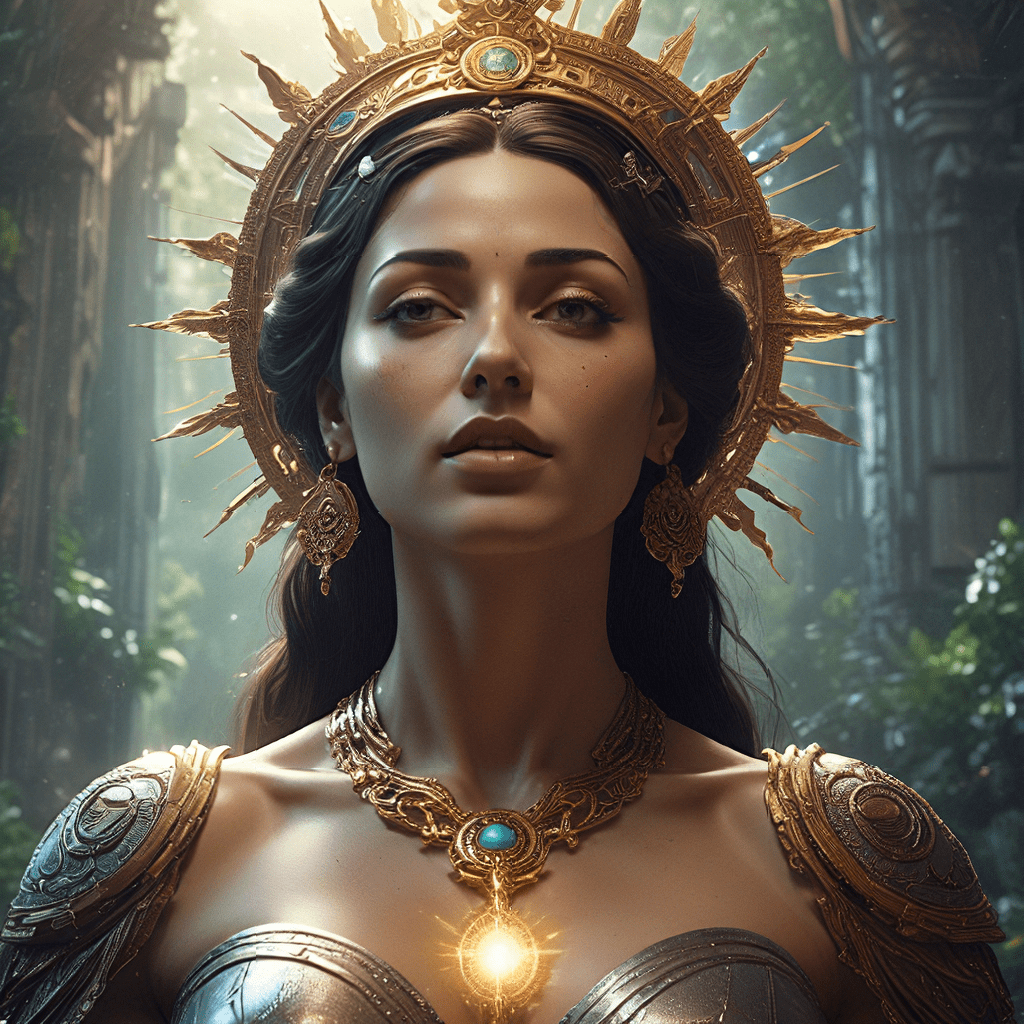The Divine Mother: A Modern Interpretation of Creation
I. Introduction: The Enduring Power of the Feminine Divine
Throughout history, the feminine divine has been a powerful presence in cultures around the globe. From ancient goddesses to modern spiritual practices, the concept of a nurturing, creative force embodied in a feminine archetype has resonated with humanity for millennia. This archetype, often known as the Divine Mother, represents the source of life, love, and the very fabric of creation itself. This article explores a modern interpretation of creation through the lens of the Egyptian Divine Mother, drawing inspiration from the rich mythology and symbolism of ancient Egypt.
II. The Egyptian Origins: A Matriarchal Universe
Ancient Egypt was a civilization deeply connected to the natural world and its cycles. Their mythology reflected this connection, with a pantheon of deities that embodied the forces of nature, creation, and life. Unlike many other cultures, the Egyptian universe was not solely governed by a male god. Instead, female deities held prominent positions, playing crucial roles in shaping the cosmos and sustaining life. Key figures like Nut, Hathor, Isis, and Sekhmet represent the diverse aspects of the feminine principle that were woven into the very fabric of Egyptian belief.
Nut, the goddess of the sky, is depicted as a celestial archway, her body stretching across the heavens. She gives birth to the sun, moon, and stars, representing the vastness and mystery of the universe. Hathor, the goddess of love, beauty, and music, embodies the nurturing and life-giving aspects of the feminine. She is associated with fertility, motherhood, and the abundance of nature. Isis, the divine healer and mother goddess, is revered for her ability to heal, protect, and resurrect. Her story embodies the transformative power of the feminine principle, her love and devotion overcoming adversity and restoring life. Finally, Sekhmet, the fierce lion goddess, represents the protective and dynamic power of the Divine Mother. These four goddesses, with their diverse roles and attributes, illustrate the complex and multifaceted nature of the feminine divine in Egyptian mythology.
III. Nut: The Cosmic Mother and the Birth of the Universe
In Egyptian cosmology, the creation of the universe is intimately connected to the feminine principle. Nut, the goddess of the sky, plays a central role in this creation myth. She is depicted as a cosmic womb, stretching across the heavens, giving birth to the sun, moon, and stars. The image of Nut giving birth to the celestial bodies symbolizes the divine feminine procreation, the generative power that brings forth the universe from nothingness. The story of Nut highlights the cyclical nature of creation, with the universe being born anew each day as the sun rises from her womb.
The myth of Nut offers a powerful metaphor for the creative potential that resides within all beings. Her image reminds us that creation is a continuous process, a dynamic interplay of forces that brings forth life and possibility. Just as Nut births the stars and planets, we too have the potential to create our own realities, to bring forth our dreams and aspirations into the world.
IV. Hathor: The Goddess of Life, Love, and Creation
Hathor, the goddess of love, beauty, music, and motherhood, reflects the nurturing and life-sustaining aspects of the Divine Mother. She is associated with the creative force that brings joy, abundance, and harmony into the world. Hathor’s connection to fertility, nourishment, and the life-giving forces of nature makes her a powerful symbol of the feminine principle’s role in sustaining life. She is often depicted as a cow, a creature known for its capacity to nurture and provide sustenance.
The image of Hathor as a nurturing mother reminds us of the vital role that love and care play in the creation and sustenance of life. Her connection to music and beauty suggests that the divine feminine not only gives life but also brings joy, creativity, and harmony to the world. Hathor’s multifaceted nature illustrates the power of the Divine Mother to inspire, nurture, and bring forth life in all its forms.
V. Isis: The Divine Healer and the Power of Transformation
The myth of Isis, the goddess of healing, resurrection, and motherhood, exemplifies the transformative power of the feminine. She is renowned for her ability to heal the sick, resurrect the dead, and protect the vulnerable. Isis’ story is one of resilience, compassion, and unwavering love. She embodies the ability to overcome adversity, to bring life back from the brink of destruction. Her devotion to her husband Osiris, the god of the underworld, and her son Horus, the god of kingship, showcases the power of the feminine principle to nurture, protect, and guide life through its challenges.
Isis’ transformative power lies in her ability to embrace the cycle of life, death, and rebirth. She teaches us that even in the face of loss and adversity, there is always the possibility of renewal and transformation. Her story reminds us that the feminine energy is not just a force of creation but also a force of healing and restoration. It is through the resilience, compassion, and love embodied by Isis that we learn to navigate the complexities of life and find our own paths to healing and transformation.
In conclusion, exploring the Egyptian Divine Mother offers a unique perspective on the creation of the universe. Through the stories of Nut, Hathor, and Isis, we gain insights into the power, creativity, and transformative potential of the feminine principle. The ancient Egyptians recognized the profound connection between the feminine divine and the very fabric of reality, a connection that continues to resonate with us today, reminding us of the sacred power of the feminine and its essential role in the creation and sustenance of life.




